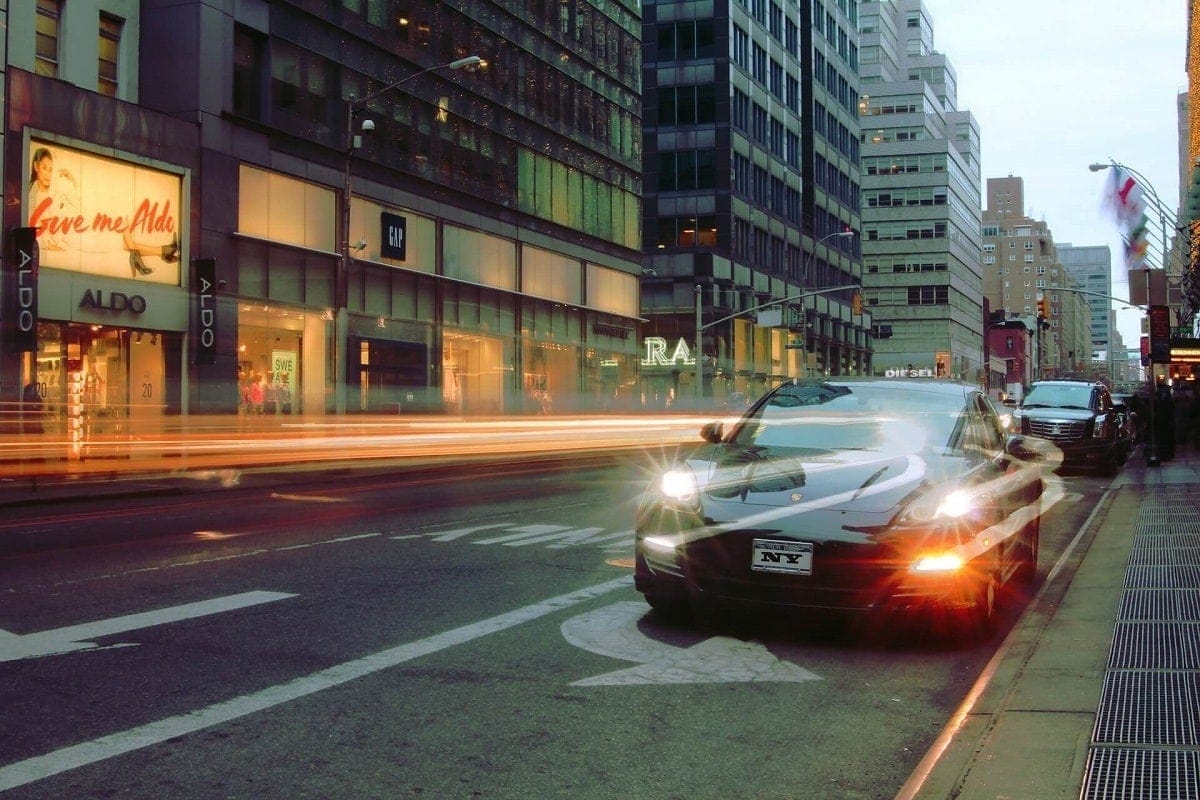
The connected vehicle does not only talk to other cars: it will also communicate with the road
17 of January of 2018
In order for cars to be able to drive autonomously without needing human intervention, they must not only communicate with each other—known as V2V, Vehicle to Vehicle—but also with the environment around them—V2I, Vehicle To Infrastructure—, with the telecommunications network —V2N, Vehicle to Net – and with pedestrians—V2P, Vehicle to Pedestrian—. The combination of all these protocols is what is known as V2X—Vehicle to X—.
Communication between all
Vehicle to X refers to an intelligent transportation system where all vehicles and infrastructure systems are interconnected.
Connecting all these elements will help provide more accurate knowledge of the traffic situation across the road network, which in turn will help improve traffic, reduce congestion and accidents and minimize gas emissions.
However, for all these elements to be connected together, several technologies are needed, such as Vehicle2X, which allows vehicles to automatically transmit messages about road conditions, traffic flow and obstacles before they appear in the driver’s visual range.
This same technology applies to other intelligent means of transport, but with a name change: Rail2X (trains), Ship2X (ships) and Airplane2X (airplanes). However, their protocols are still being defined.
In addition to communication between vehicles, other aspect, such as communication of cars with infrastructure (V2I) comes into play. This protocol will allow cars to control traffic signals and know who has priority in certain situations. If smart cars will be able to know the ideal route at all times, it is because they will know the status of traffic in real time, something that is possible with Vehicle to Network (V2N) technologies. Furthermore, since they are not on their own, Vehicle to Pedestrian (V2P) dialogue is also being developed, with which safety alerts for pedestrians or cyclists can be created.
It is therefore a question of providing 360º knowledge for everything around vehicles to improve safety: to know about our route’s possible intersections or environmental conditions, optimize road traffic by avoiding acceleration and sudden braking, etc.
Why V2I is Important
V2I is a communication model that allows vehicles to share information with road components and other traffic routes: RFID readers and cameras, traffic lights, lanes, street lamps, signs, parking meters, road signs, etc.
V2I communication is usually wireless and bidirectional. Vehicles are informed about road data through a specific network for this purpose, and vice versa. Similar to vehicle-to-vehicle (V2V) communication, V2I uses dedicated short-range communication (DSRC) frequencies for data transfer.
This requires the creation of an Intelligent Transport System (ITS), in which V2I sensors can capture infrastructure data and provide travellers with real-time warnings about specific situations such as road conditions, traffic congestion, accidents, construction areas and availability of car parks.
In addition, traffic management monitoring systems can use infrastructure and vehicle data to set variable speed limits and adjust phase and traffic signal synchronization (SPaT) to improve fuel economy and traffic flow.
In January 2017, the United States Department of Transportation announced the guide ‘Federal Highway Administration (FHA) V2I’, aimed at improving safety and mobility accelerating the deployment of V2I communication systems. The guide seeks to help state and local governments get ready to accommodate vehicle initiatives for infrastructure and manage the data that supports it.
Who is really in command?
We can therefore say that V2I has a coordinating role, because thanks to its collection of global or local information on traffic and road conditions, it can suggest or impose certain rules on a group of vehicles.
For example, this communication system will be responsible for determining the speed and safety distance between vehicles according to traffic conditions.
These recommendations can be made available through light signs on the road or directly to vehicles through these wireless communications – so that they are integrated into vehicle controls and applied semi-automatically.
V2I is a complex system and therefore must be capable of detecting and prioritizing many circumstances, such as:
- Detecting and responding to speed limit changes and speed warnings.
- Lane exits and parking spots.
- Detecting and responding to vehicle invasions.
- Detecting work zones.
- Performing car tracking (including long and short stops).
- Detecting and responding to stopped or idling vehicles.
- Detecting and responding to lane changes.
- Detecting and responding to obstacles along the way.
- Detecting and responding to traffic signals and stop signals (such as emergency triangles).
- Knowing how to interpret intersections and make turns.
- Driving in the roundabouts.
- Navigating through a parking area and locate open spaces.
- Detecting and responding to access restrictions.
- Detecting and responding to workplaces and the people who direct traffic in them.
- Making appropriate decisions about the right of way.
- Following local and state driving laws.
- Responding to police or workers’ instructions in construction zones.
- Responding to citizens who direct traffic after an accident.
- Detecting and responding to temporary traffic control devices.
- Detecting and responding to emergency vehicles.
- Providing a safe distance from vehicles, pedestrians, or cyclists at the side of the road.
- Detecting/responding to detours and/or other temporary changes in traffic patterns.
In other words, it’s not sufficient just for vehicles to be autonomous, but the entire infrastructure and roads have to be smart enough to engage in a “dialogue” with these vehicles and other constraints that may come into play. This will ensure that driving is not only safer but also pollutes less.









There are no comments yet